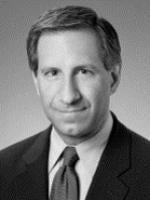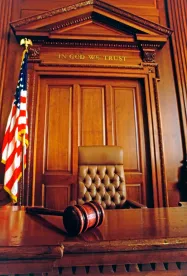In Fezzani v. Bear, Stearns & Co., Inc., No. 14-3983, 2015 WL 400547 (2d Cir. Jan. 30, 2015) (“Fezzani II”), the United States Court of Appeals for the Second Circuit clarified its opinion in Fezzani v. Bear, Stearns & Co., Inc., 716 F.3d 18 (2d Cir. 2013) (“Fezzani I”), ruling that its earlier decision did not require a plaintiff alleging market manipulation in violation of Section 10(b) of the Securities Exchange Act of 1934, 15 U.S.C. § 78j(b), and Securities & Exchange Commission Rule 10b-5, 17 C.F.R. § 240.10b-5, promulgated thereunder, to plead that a defendant directly communicated false information to a victim. The Second Circuit’s decision in Fezzani II provides much-needed clarity on the standard for liability in market manipulation cases.
Background
The Fezzani decisions (see blog article on Fezzani I here) arise out of a “pump and dump” scheme executed by now-defunct broker-dealer A.R. Baron (“Baron”). Defendant Issac R. Dweck, one of Baron’s principal investors, furthered the scheme by allowing Baron to “park” penny stock in his accounts in exchange for Baron’s promise to repurchase the securities at a higher price. These fraudulent transactions created the illusion that the parked securities were part of an active, rising market when, in reality, the “market” was nothing but a series of artificial trades arranged by Baron to generate the façade of a market.
Plaintiffs, a group of individual investors, sued Dweck and others for market manipulation in violation of Section 10(b) and Rule 10b-5. Plaintiffs sought to impose liability on Dweck for all of Baron’s deceptive activities, not just for damages caused by the fraudulent transactions.
District Court Dismisses Market Manipulation Claim Against Dweck
The United States District Court for the Southern District of New York dismissed the market manipulation claim against Dweck, see Fezzani v. Bear, Stearns & Co. Inc., 592 F. Supp. 2d 410 (S.D.N.Y. 2008) (Crotty, J.), holding that plaintiffs failed to state a claim under Section 10(b) and Rule 10b-5 because their allegations that Dweck substantially participated in the fraudulent transactions did not show how plaintiffs relied on misrepresentations or omissions by Dweck, as required by the United States Supreme Court’s decision in Stoneridge Investment Partners, LLC v. Scientific-Atlanta, Inc., 552 U.S. 148 (2008). Plaintiffs appealed.
Fezzani I: Second Circuit Affirms Dismissal of Market Manipulation Claim Against Dweck
The Second Circuit affirmed. In Fezzani I, a 2-1 majority panel of the Second Circuit held that, under Stoneridge and Janus Capital Group, Inc. v. First Derivative Traders, 131 S. Ct. 2296 (2011), “only the person who communicates the misrepresentation is liable in private actions under Section 10(b),” including market manipulation cases. Plaintiffs-appellants’ complaint, however, failed to allege that Dweck communicated artificial prices to the would-be customers. Plaintiffs-appellants sought panel rehearing or rehearing en banc.
Fezzani II: Second Circuit Clarifies Its Ruling in Fezzani I
In Fezzani II, the Second Circuit denied plaintiffs-appellants’ petition for rehearing and, prompted by an amicus curiae brief filed by the SEC in support of the petition for rehearing, clarified its decision in Fezzani I. Responding to the SEC’s reading of Fezzani I as holding that, in any and all manipulation cases, liability attaches only to persons who communicate a misrepresentation to a victim, the Court stated bluntly:
We write only to state the obvious: our opinion did not require that reliance by a victim on direct oral or written communications by a defendant must be shown in every manipulation case. Indeed, we agree with the proposition of law asserted by the SEC that, in a manipulation claim, a showing of reliance may be based on “market activity” intended to mislead investors by sending “a false pricing signal to the market,” upon which victims of the manipulation rely.
As the Court explained, the present case did not involve any ongoing market affected by false pricing signals by Dweck. There was no real market. To hold Dweck liable, then, would “create a theory of market manipulation in the absence of a market.” Given these facts, the Court concluded that Stoneridge applied to reject the market manipulation claim against Dweck.
The Dissent
Judge Raymond J. Lohier, Jr. concurred in part and dissented in part. He commended the majority for “correct[ing] the misimpressions left by the original majority opinion.” Nevertheless, Judge Lohier dissented from the majority’s dismissal of the claims against Dweck:
On the one hand, to the extent that the majority opinion can be understood to conclude that the plaintiffs failed to allege reliance on Dweck’s role, it misses the point of the manipulative scheme, which was to conceal rather than disclose Dweck’s role as a confederate who parked securities. On the other hand, to the extent that the opinion suggests that the plaintiffs inadequately alleged reliance on the effect of Dweck’s parking, as well as other components of the manipulative scheme, that suggestion is contradicted by the allegations [in the complaint].
Conclusion
Fezzani II is significant for several reasons. For one, it reaffirms that the strict limitations on the scope of primary liability set in Stoneridge and Janus apply to claims involving market manipulation. Additionally, where it was believed that the Second Circuit’s opinion in Fezzani I curtailed Section 10(b) market manipulation claims, Fezzani II establishes that such claims are alive and well, and include claims based on reliance not only on direct communications by a defendant to a victim, but also on reliance on deceptive market activity.




 />i
/>i

